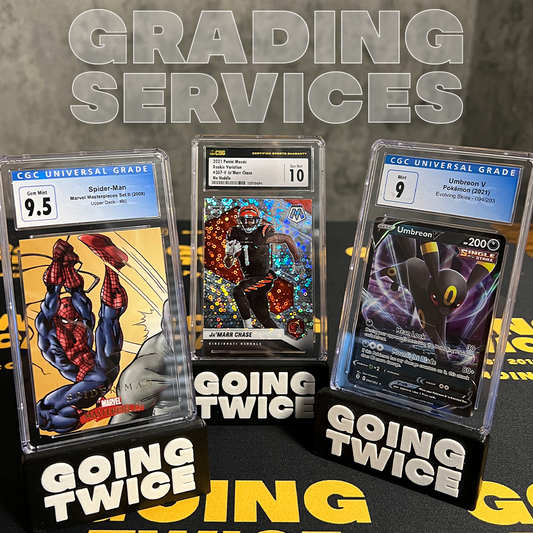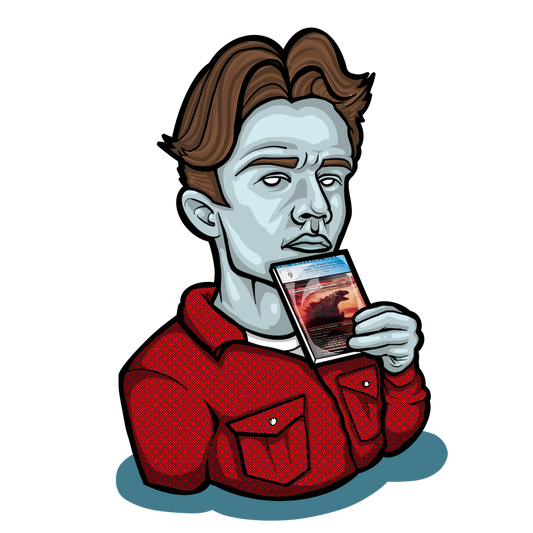Meiji is one of the largest candy manufacturers in Japan, and was one of the first food brands to partner with Pokemon after Pokemon’s launch in 1996. The cards that came out of that early collaboration are immediately recognizable, as the design is entirely unique to Meiji and printed on shorter heavier card stock with a variety of finishes over the years. It wasn't until 2004 that Meiji and the official Pokemon TCG teamed up to release cards from new Pokemon sets in Meiji chocolates. The cards were identical to the ones a person could pull from a booster pack, but with a red Meiji stamp on the card. The Meiji promos from 2004-2008 were non holo, but included chase cards like the Charizard from sets like Power Keepers and the Lugia from Pop series 5. However, we will be focusing on the earlier promos as their creative designs and beautiful foiling will always have an important place in the early days of Pokemon.

The first cards were released with chocolate candies in 1997, each box of chocolate containing one Meiji promo card. Every card in the set was a foil, but certain cards like the Mew and Mewtwo had gold foil versions as well. This first run of Meiji cards had wildly different backgrounds for each card, Articuno in front of an icy mountain range, Persian in front of a Team Rocket monogrammed background with Jessie and James in the corner of the picture, Zapdos in a lightning storm, etc. However there was a standardized layout that each card used. Underneath the Pokemon’s image was its name, then in another box below was the Pokemon Hit Points (HP), its type (shown with images such as a snowflake for ice, wings for flying, etc) and a hand displaying the sign for roc, paper, or scissors. That's right! This was the way to play against another person with the Meiji cards, with the classic game of rock paper scissors. The cards could be made into a deck and then flipped to reveal the hand symbol that would go against your opponents. I was blown away when I first learned this, and think it was quite a clever way to make these cards a lot of fun. On the back of the card is more information about the Pokemon, including its height and weight, and information on the candy itself.

Meiji continued cranking out the hits in 1998, releasing another set of 48 cards based around the newly released Pokemon movie and its accompanying Pikachu short film. Every card featured scenes and characters from the movie, and instead of a basic foil, every card in the set was given a “spinning square” holofoil pattern, giving the cards a beautiful pinwheeling holographic effect. The Rock Paper Scissors gameplay remained for this set, as well as the HP, though for certain cards the HP is simply “??” as the card is a scene and not just one character. These are some of Meiji’s most popular cards, and the prices can get insane for these cards graded even in an 8 or 9. As with the first Meiji series, these promos were released loose in a box of candy, with no thought of preserving them for the eventual customer. As such, to obtain very mint copies is next to impossible, as the cards were bounced around in a candy box before the new owner would have even had a chance to protect them. For this reason, highly graded versions are hard to find, and serious collectors go after them with a vengeance.

Meiji continued the collaboration in 1999 and shook up the design once again, introducing foil cards with an embossed treatment for the new set. The rock paper scissors dynamic was done away with, leaving a simpler, sleeker visual on the front that featured only the Pokemon and its name, this time written out in English rather than Japanese characters. This would be the trend moving forward, though the names would not necessarily be the same as when Pokemon would be released in North America. For example, “Freezer” is Articuno and “Windie” is Arcanine, but Pikachu is still Pikachu even when written out in English. Since the Rock paper scissors gameplay was absent, the back of the cards had the Pokemon’s stats that could be measured up against each other. The embossed Meiji cards are a niche collectible to be sure, but one that has an avid following of voracious collectors. These cards are truly works of art, and some of the most visually stunning promos to come out of Japan in the history of Pokemon.

2000 marked the largest set of Pokemon promos Meiji had released thus far, with Blue, Silver, and Gold foil versions of the featured Pokemon. Only Pikachu was given one of each color, the rest of the Pokemon in the set appearing only as a blue, silver, or gold foil. This set brought back the rock paper scissors game and kept the embossed treatment of the cards, making it a true fusion of the 1997 and 1999 sets. This was the first Meiji set to include Pokemon from the second Generation, such as fan favorites Espeon and Umbreon (aka Eifie and Blackie). Ironically Lugia only has a Gold foil version despite being the figurehead for the Gameboy Color game Silver Version.

In 2001 Meiji did away with the embossed cards, and elected to release its new set with a horizontal rainbow holofoil. The cards are extremely reflective and have almost a hologram effect. This holofoil pattern would actually make its way into the TCG in the Platinum Arceus era for the various Arceus cards, though only in the Japanese versions. The artwork for this year’s set was a mix of recycled ones from 2000, and some new graphics of Pokemon like Marill. The rock paper scissor feature was once again removed from the front of the card, though no stats for the Pokemon can be found on the back of the card so it is unclear if 2001’s set was playable or could only be collected.

And finally we reach the last year of Meiji’s original Pokemon promos, 2002. This year’s set was a major shakeup, and is known as the “versus series” (not to be confused with the VS series that would be released as part of the TCG). Each card in this set featured an embossed battle scene between two Pokemon, with their names written along the side of the card on a bar of color. Which color would depend on the card, Pikachu vs Hellgar (Houndoom) is red, Ordile (Feraligatr) vs Kamex (Blastoise) is yellow, and so on. The battle scenes are intense, the Pokemon showing off some of their strongest moves such as Flamethrower and Hydro Pump. This is combination with the embossed texturing of the cards makes them quite a sight to behold, and a huge chase for any serious Meiji collector. To get a Mint 9 grade for one of these cards is no small task, and the resale market’s prices reflect that. As with all Meiji cards however, there is no booster box to go rip to get them “pack fresh” however, so finding a mint copy to grade yourself is almost impossible.
And that's the beauty of it! Meiji promos were short print cards that were never meant to be graded and protected. They were loose in boxes of chocolates for kids to play rock paper scissors with and get excited about Pokemon. The edges and surfaces on Meiji cards are easily damaged, so it is quite astounding that there are as many mint copies as there are floating around the collectosphere. Chasing these down is a fun rabbit hole to go down, and yes you will be diving down a rabbit hole if you hope to find some of these promos, but the journey is fun and the cards are unlike any others released in the history of Pokemon. If this article is the first time you are learning about the Meiji cards, I would strongly suggest you look some up and see for yourself how wonderful they are. The vibrant design, vintage artwork, and scarcity makes Meiji Pokemon cards a collectors dream. Challenging to find but rewarding when you get your hands on one you've been hunting for. Happy hunting out there!




